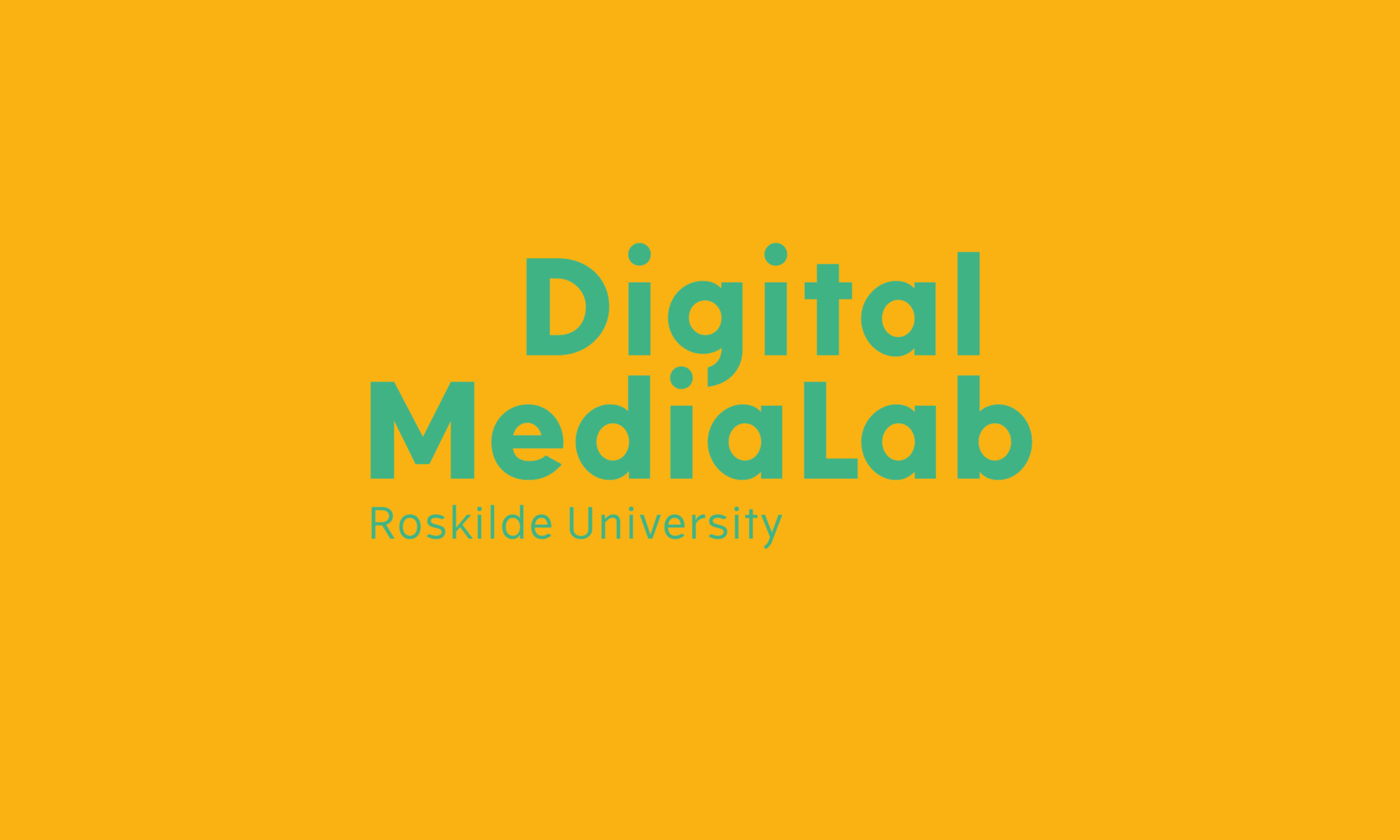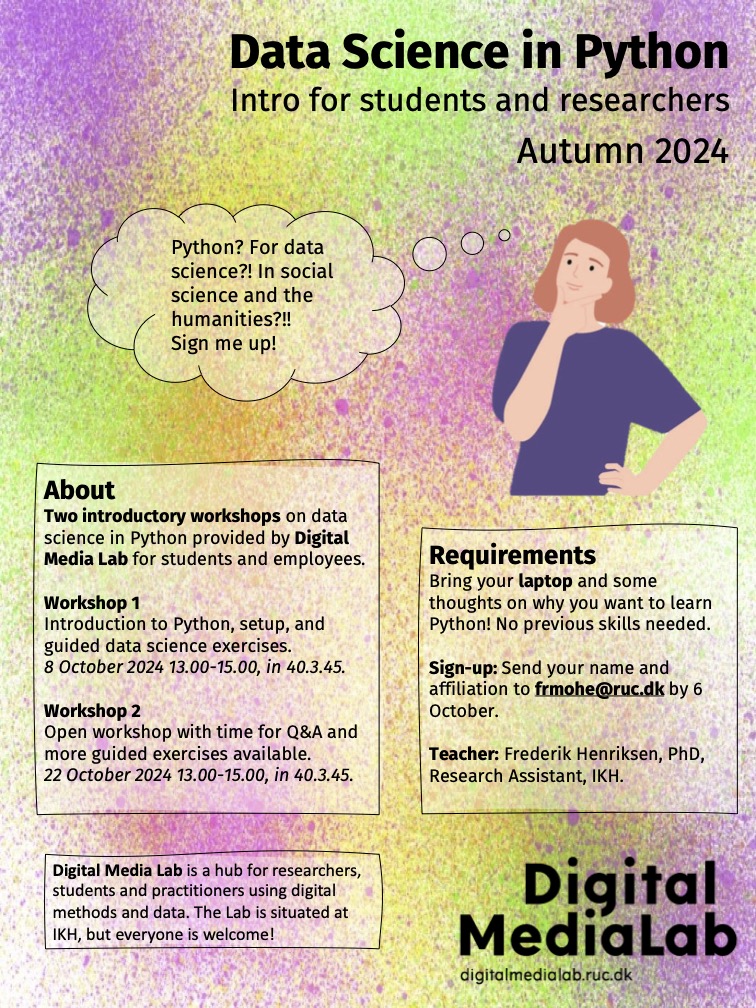Er du forsker eller studerende og har du brug for hjælp til analyse og visualisering af digitale data? Eller vil du bare gerne lære mere om muligheder for dataadgang samt tilgængelige værktøjer? Digital Media Lab afholder en række lab sessions hvor alle med interesse kan få hjælp til alt fra hvordan man finder og indsamler digitale data fx fra internettet og sociale medier til statistik og programmering.
Datoer og tider:
- 1. oktober 13 – 16
- 22. oktober 13 – 16
- 12. november 13 – 16
- 12. december 13 – 16
Sted: Digital Media Lab, lokale 40.3.45
Ingen tilmelding – bare drop ind – men skriv dig gerne op på denne mailingliste for at få opdateret information: bit.ly/dmlruc
Hvis du har spørgsmål, så skriv til Jakob Bæk Kristensen på (jakobbk@ruc.dk).



